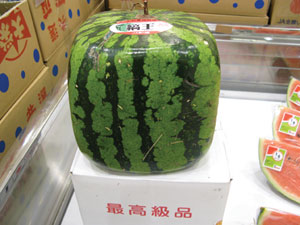 |
| Photo courtesy of WikiCommons |
As a former hippie, I’m often accused of waffling on the GMO issue. But, as a journalist and former bench scientist, I see the problem as complex—it cannot be reduced to its current semantics. There are GMOs...and then there are GMOs.
Years ago, I wrote that we’re all GMOs—genes from one parent were actively mixed with those of another and, voila, one genetically modified organism. But, such pithiness aside, there’s a gray area where one should put, say, a soy bean bearing a transplanted gene from its chick-pea cousin to make it better at fixing nitrogen vs. the insertion of a fish gene into a tomato to keep it from freezing on the vine.
In the case of the soy-garbanzo cross, the merging of the traits of these relatives could sharply reduce the energy soy uses to grow, while boosting its sustainability and overall ecobenefits—while making it a more viable crop for developing-world farmers. This, to me, is hurrying along Mendelian genetics for a far greater good, without drifting far outside of what Mother Nature could herself do. Yet, the fish-tomato meld probably deserves the moniker “Frankenfood.”
However one feels about GMOs, the current hysteria and malevolence does no side any favors. With back-door, Machiavellian political ambushes and undue influences on representatives and judges to overcome the will of a populace demanding at least honest labeling, the big GMO companies are not only being extremely shortsighted, they’re helping their opponents. Fact: Labeling will happen, whether or not it is mandated. “GMO-free” already is a major marketing tool, and a rapidly growing one at that. Supermarket giant Whole Foods recently declared it will self-label GMO products by 2018.
For the anti-GMO side, the only way to present a legitimate argument is via science, not histrionics or refutable sound-bites. A case in point is the image that accompanies this editorial. It’s been showing up in a number of anti-GMO articles. Looks scary, right? Yet, there was nothing done to these melons besides growing them in clear plastic cubes that coax them into those easily storable square shapes. These anti-GMO poster children can be proudly labeled as non-GMO.
Note: Can GMOs actually help stem the collapse of the oceanic food chain? For an interesting development in GMO science that could lead in that direction, see “A New Alpha for Omegas,” in Prepared Foods’ June issue, page NS25.
Consumer-Driven Product Development Opportunities
Thursday Keynote Presented by Kelli Beckel, Senior Marketing Manager, Nielsen Perishables Group
To help the food and beverage industry understand and uncover new product development opportunities, Kelli Beckel will share Nielsen’s DNA of Innovation. She will review nine years of research on winning product launches to help attendees understand what characterizes sustained success. Beckel will also explore how evolving consumer mindsets and the economy are changing food purchase decisions—and how to leverage that knowledge to drive innovation.
Don’t miss this presentation! Join us at Prepared Foods’ R&D Applications Seminar-Chicago, August 14-15, 2013, at Renaissance Chicago O’Hare.
This 9th annual event provides food and beverage formulators with practical, non-commercial, “how-to” solutions for specific formulation challenges and a better understanding of the functionality of a wide range of ingredients.
The Seminar’s extensive educational program features over 40 individual, technical sessions and six 75-minute Application Labs, plus a keynote address each day.
For the complete program and to register visit
Questions? Contact Marge Whalen at 847-405-4071 or

